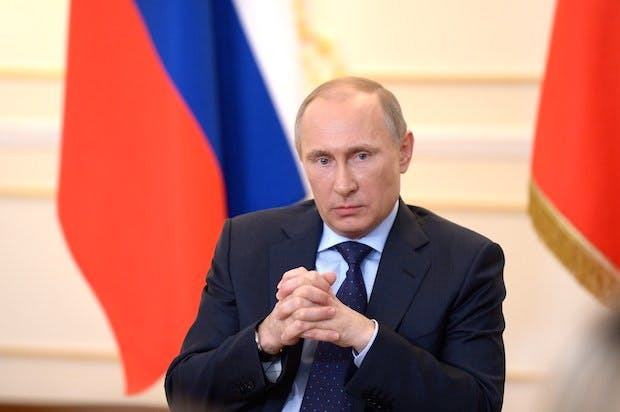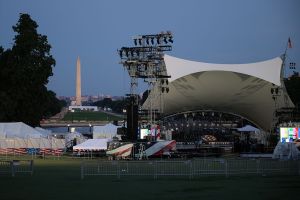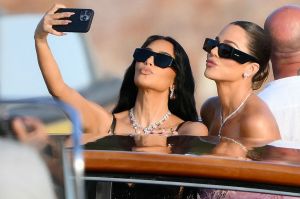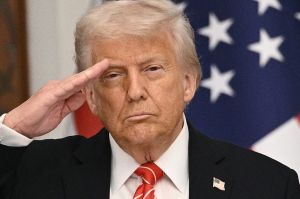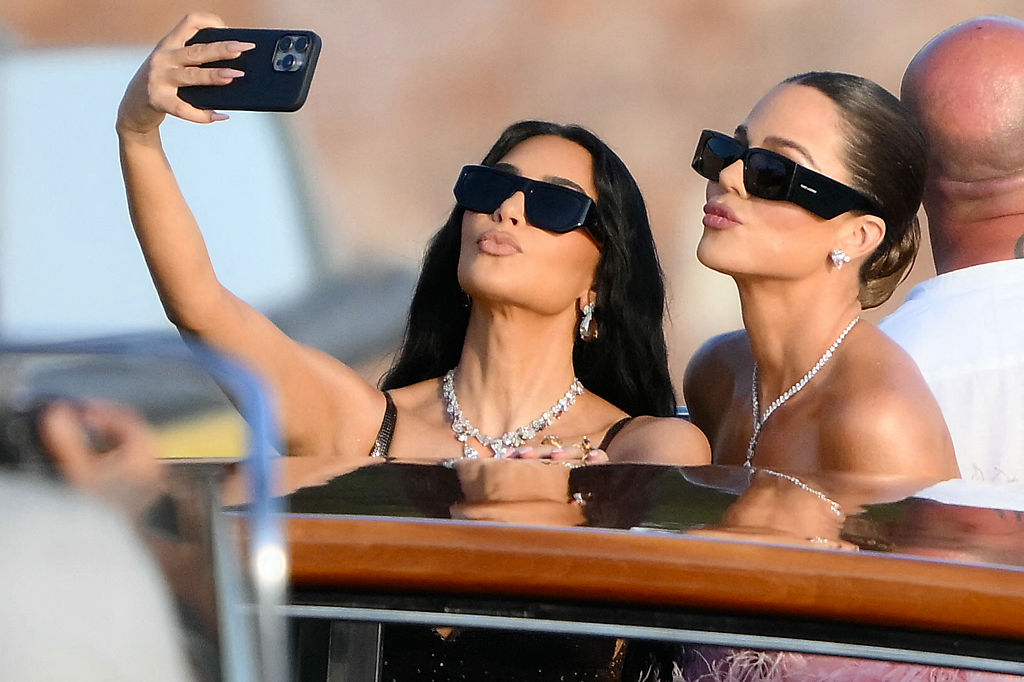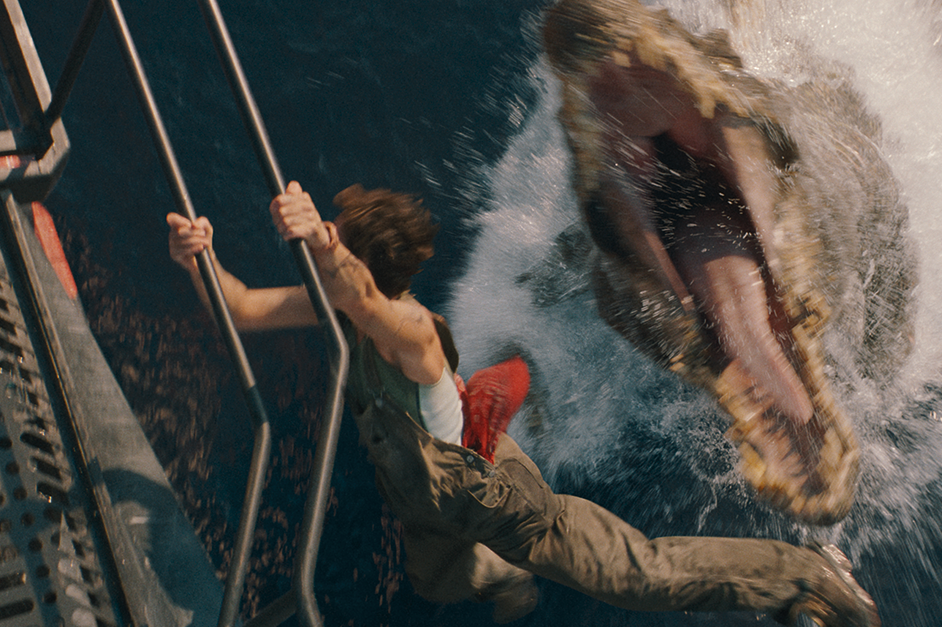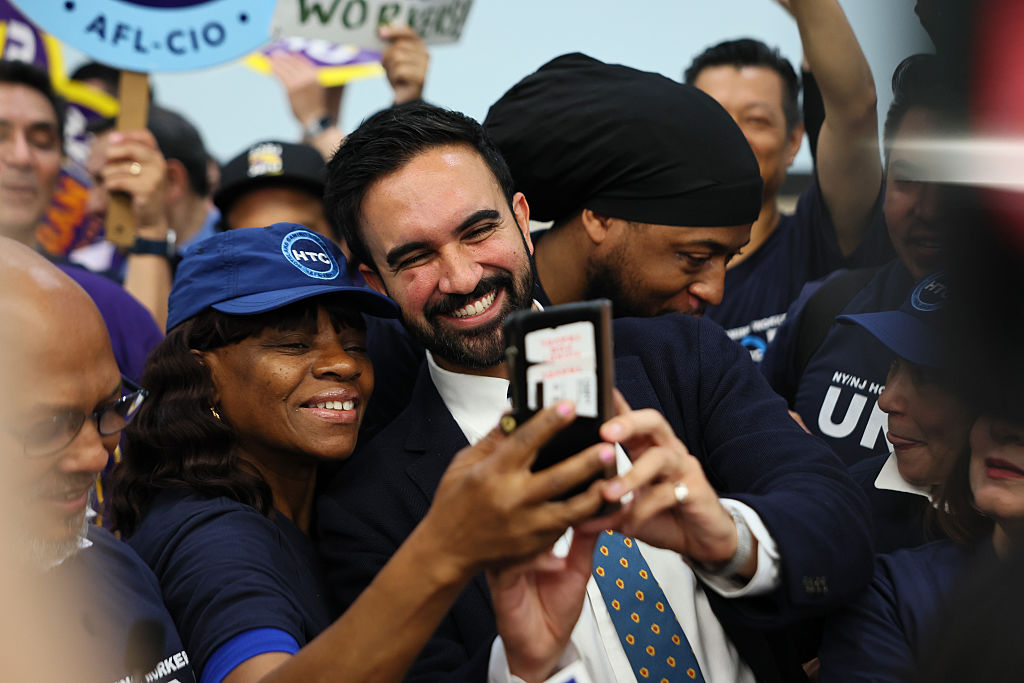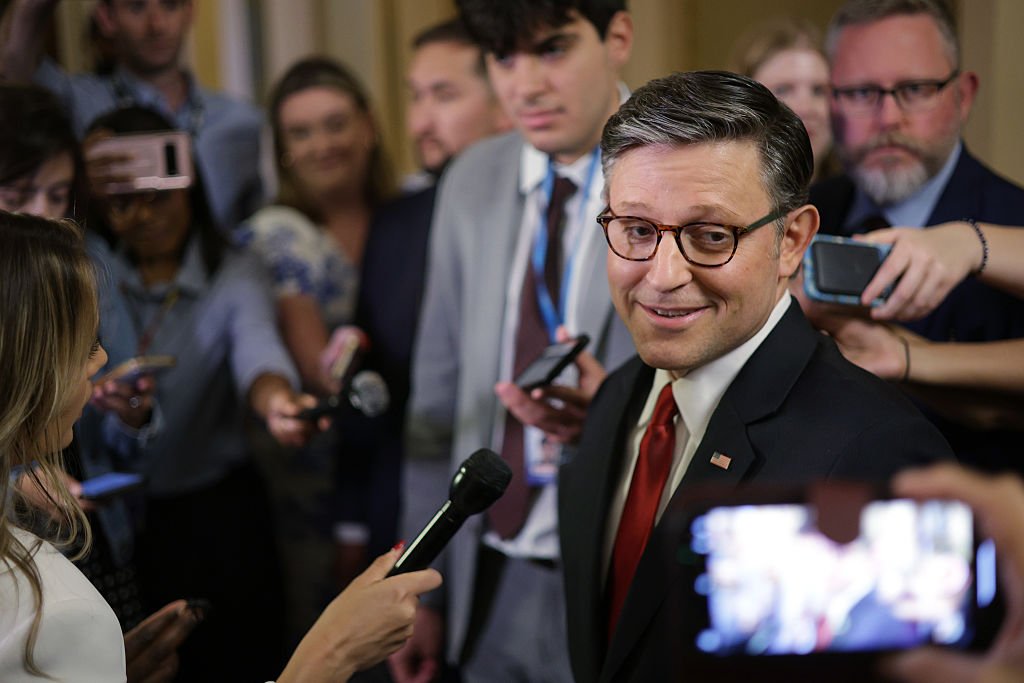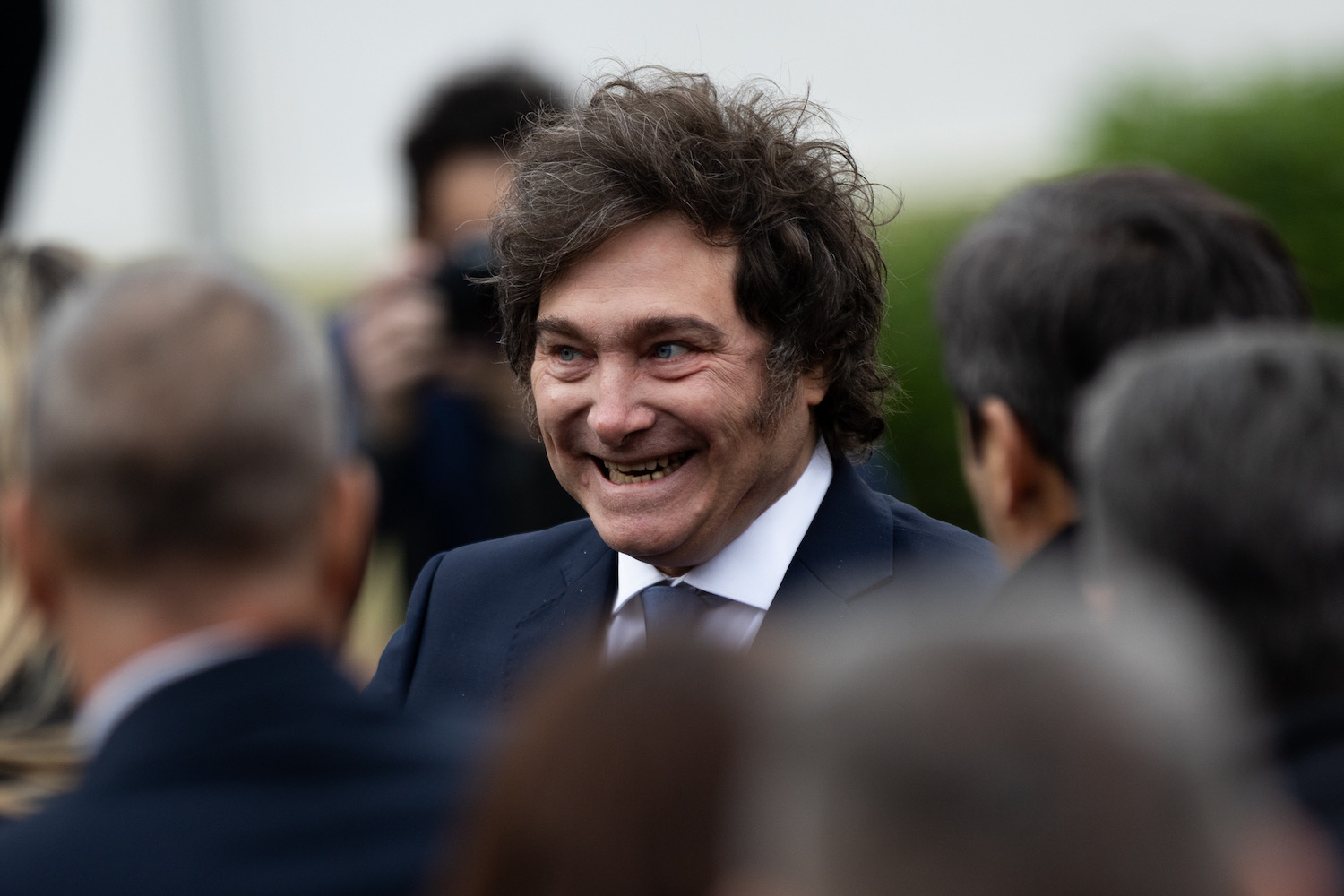This is an edited version of a presentation given by Owen Matthews at The Spectator’s What does Russia want? event.
What I’d like to do is give a run-through of how we got to where we are with Russia. From the end of the Cold War onwards, focusing on the economy – and how the economy, in true Marxist fashion, has shaped the politics and political realities that we see in Russia today.

The first metric is the big story of the post-Cold War world. Very simply, the graph above shows what’s happened between the collapse of the Soviet Union and the present day. It’s very clear: America’s GDP has gone from $10 trillion to $18 trillion, China is catching up and Russia is flatlining. In fact, this graph slightly obscures the dramatic collapse between 1990 and ’95, when Russia lost nearly 40 per cent of its industrial capacity.
But that’s the overall pattern: America, even at the end of the Cold War, was about five times larger in economic terms than Russia. China was smaller than Russia. Today, despite the extraordinary semblance of superpower status that Vladimir Putin has done such an effective job of creating, Russia – just before the latest round of economic sanctions, at least – had an economy that was smaller than Texas. In European terms smaller than Italy, slightly bigger than Spain; in world terms, slightly smaller than South Korea, slightly bigger than Australia.
We therefore have a story of a superpower which has failed to keep up with its rivals, dramatically so, and everything that we see in Russia’s behaviour is predicated on that – the phantom limb of Empire, the bitter nostalgia of a lost world and the lost power that is represented by this. It’s a collapse. Russia is now a smaller economy than it was in 1991 and everyone else has grown dramatically.

Now to slightly more recent history. What has been happening in Russia since Russia became a problem? Let’s put it in those primitive terms. Essentially in 2014, the oil price collapsed, the Russian economy collapsed with it, and the rouble lost 40 per cent of its value. This graph above is income per person, so essentially what we’ve seen since in the last four years is Russian incomes collapsing pretty much to Chinese levels, which is profoundly shocking when you see it from the outside.
When you see it from the inside, of course, it is slightly less palpable because Russian products are rouble denominated. But nonetheless, Russia is now dramatically lagging behind even Poland. If we’d taken this back to 1990 we would have seen Russia far richer than Poland.

The graph above shows how, as the economy and wages have collapsed, we have seen military spending going up and up and up. Since 2014 we see it going up even more steeply. This is a significant feature of Putin’s Russia: less money, more guns.

But here is the metric that all Kremlin pundits, and everyone in the administration, follows obsessively – the ‘rating’ as it’s known in Russian. On the graph above you see the various egregious things that Russia has done in recent years. Most importantly, look at the rating getting down to the low 60s in 2013, which in Russian terms is disastrous. And then right afterwards you have the Sochi Olympics, the annexation of Crimea and it spikes. It’s suddenly up in the high 80s and it’s stayed there.

Above we have the opposite curve, which shows how the oil price crash coincided with Putin’s rating soaring. Now that is a bizarre thing by any political standards. How does a world political leader manage to make his rating soar when his economy is crashing? How do you achieve that extraordinary feat of political prestidigitation? Well, you do it by convincing Russian people that they are under attack, they are at war. Not only do you actually start a few real wars, or at least get involved in them in the Syrian case, you back them covertly as in Ukraine.
The extent to which Russia glorifies its heritage, its enormous achievement and sacrifice in the Second World War is remarkable. But as part of the contemporary political dialogue in Russia, the second world war has become vastly more important in the last few years of Putin’s leadership. The two are linked: this idea of Russia as the defender against fascism and, most importantly, Putin as a present-day war leader.

The above graph gives a little bit of context to how Russia’s economy differs from the US economy. It shows that 20 per cent of Russia’s economy is small and medium-sized businesses, but nearly half of the United States economy is. That’s an inversion, roughly, of what it was immediately after the Soviet collapse. The reason for that is that you have in Russia an enormously predatory bureaucracy, which kills small business. We see that 30 per cent of the workforce is employed by the state in Russia and that nearly half of federal government revenues are from oil and gas.

This graph is essentially showing the same thing – oil and gas revenues as part of the federal budget and as a proportion of GDP. Despite all the declarations by Putin and Medvedev, his brief stand-in, that Russia would be weaned off this dependence, it essentially didn’t happen. Russia remains profoundly dependent on oil and gas extraction.

What has also happened is we have a major change in the world oil market, as the graph above shows. We have Saudi Arabia growing steadily, we have Russia more or less going up and down but we have a shale oil revolution happening in America. Russia has just 45 years of oil left. There hasn’t been a new oilfield discovery in Russia since 1973 amazingly. They’ve discovered lots of gas but almost no oil. Even with enormous Western investment, enormous effort, they probably only have 181 billion barrels still in the ground, which is much less than Saudi Arabia.
 Now let’s try and explain why 76 per cent of the Russian population voted for Vladimir Putin. One explanation is you have an extremely strange demographic curve, as shown above. Essentially if you look at it, between 1990 and 2005, you have a gigantic dip in people having children because the economy is in crisis. It’s a natural thing but it means that you have above it a gigantic population bulge of people who were born between 1970 and 1990, who still have what I would call residual happy memories of Soviet childhood. So you have a massive imbalance with people who are young – an educated young urban demographic that would support Ksenia Sobchak, for instance. There are just physically fewer of them because of this strange demographic dip.
Now let’s try and explain why 76 per cent of the Russian population voted for Vladimir Putin. One explanation is you have an extremely strange demographic curve, as shown above. Essentially if you look at it, between 1990 and 2005, you have a gigantic dip in people having children because the economy is in crisis. It’s a natural thing but it means that you have above it a gigantic population bulge of people who were born between 1970 and 1990, who still have what I would call residual happy memories of Soviet childhood. So you have a massive imbalance with people who are young – an educated young urban demographic that would support Ksenia Sobchak, for instance. There are just physically fewer of them because of this strange demographic dip.

Everybody who is in power in Russia regards their position as a way to gather money to themselves. So much so that the value of corruption in Russia has been estimated at one third of GDP. Obviously that’s a ballpark figure – one from Transparency International. But we know that from the British police about £90 billion a year is laundered through London alone. We know that there is an enormous amount of the high-end property market in London which has been bought by various offshore trusts which are not traceable but are likely to be linked from Russia. Again from 2005 there was not much capital flight, as shown above. Going on, and particularly after 2014, you have a major spike. Basically Russians who have made money in Russia are shovelling it abroad at a rate of knots.
So to quickly summarise, we’re looking at an economically rather small country, which still has the second largest nuclear arsenal in the world. Above all it is a country that has convinced itself that it is a Sparta under siege from the world. You and I may not have noticed it, but the Russians for some years have been told by the press and television that they are under attack from the West and they sincerely believe that. Ultimately, that’s the key to the entire Russian political landscape.



